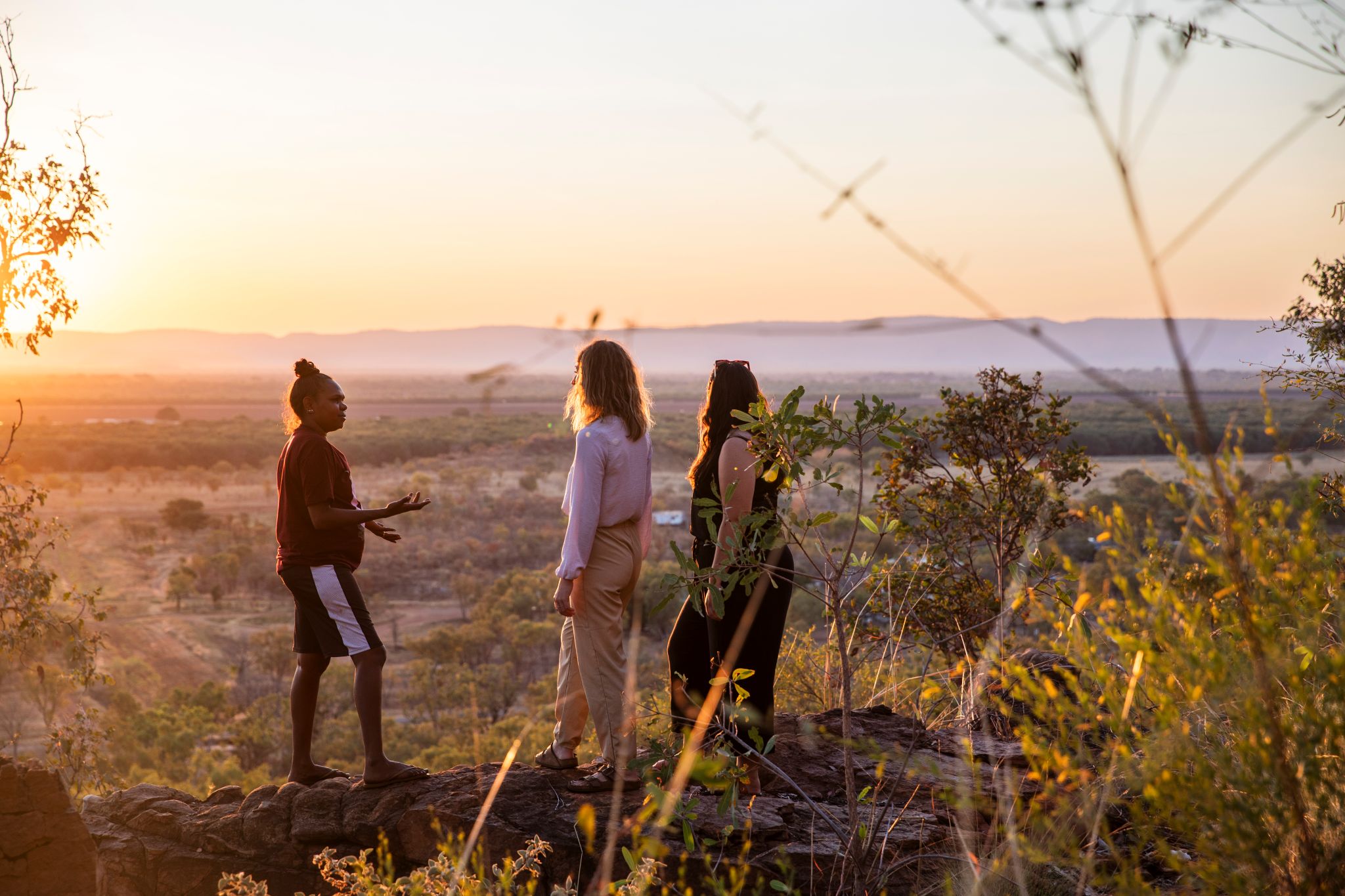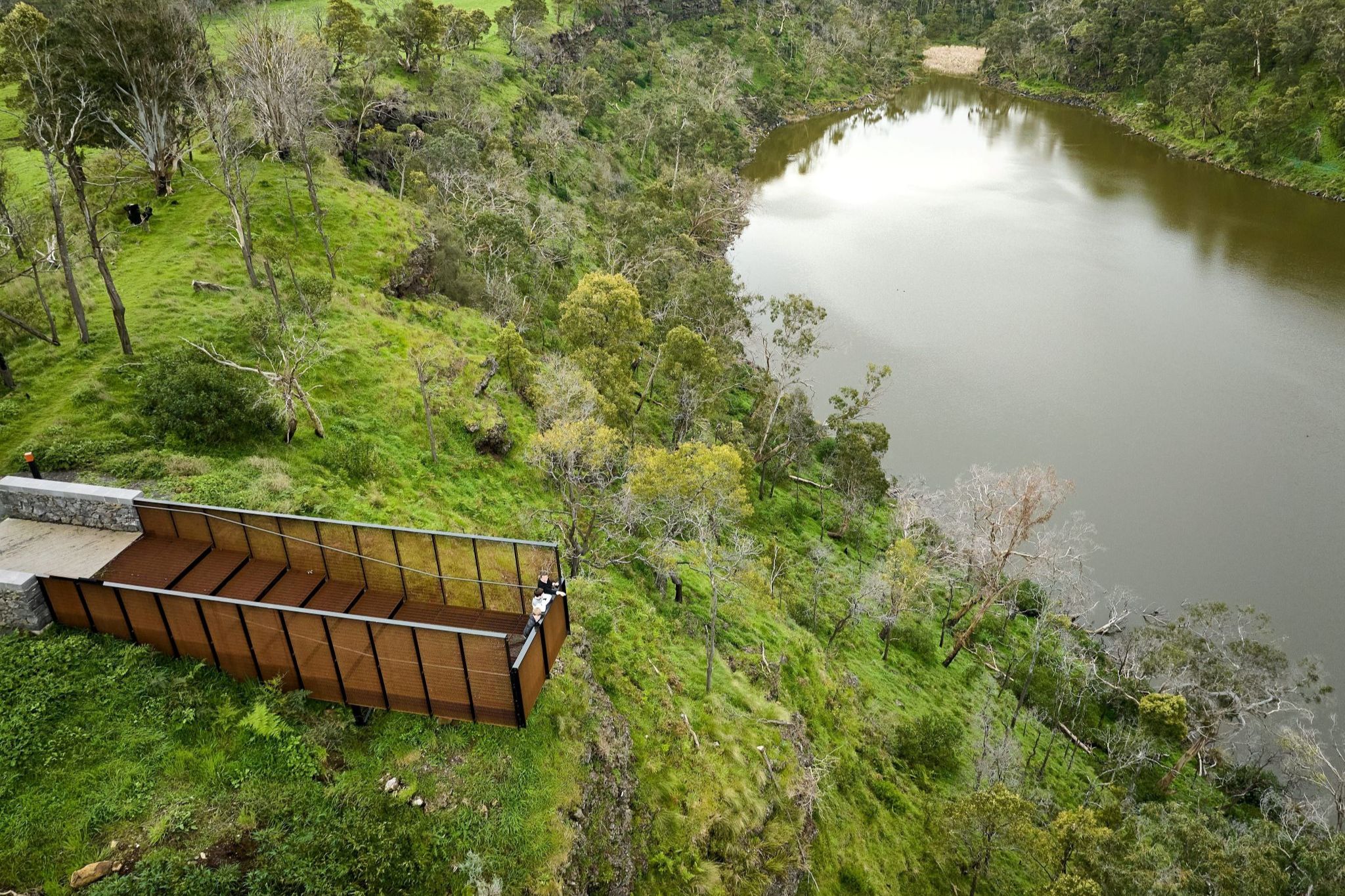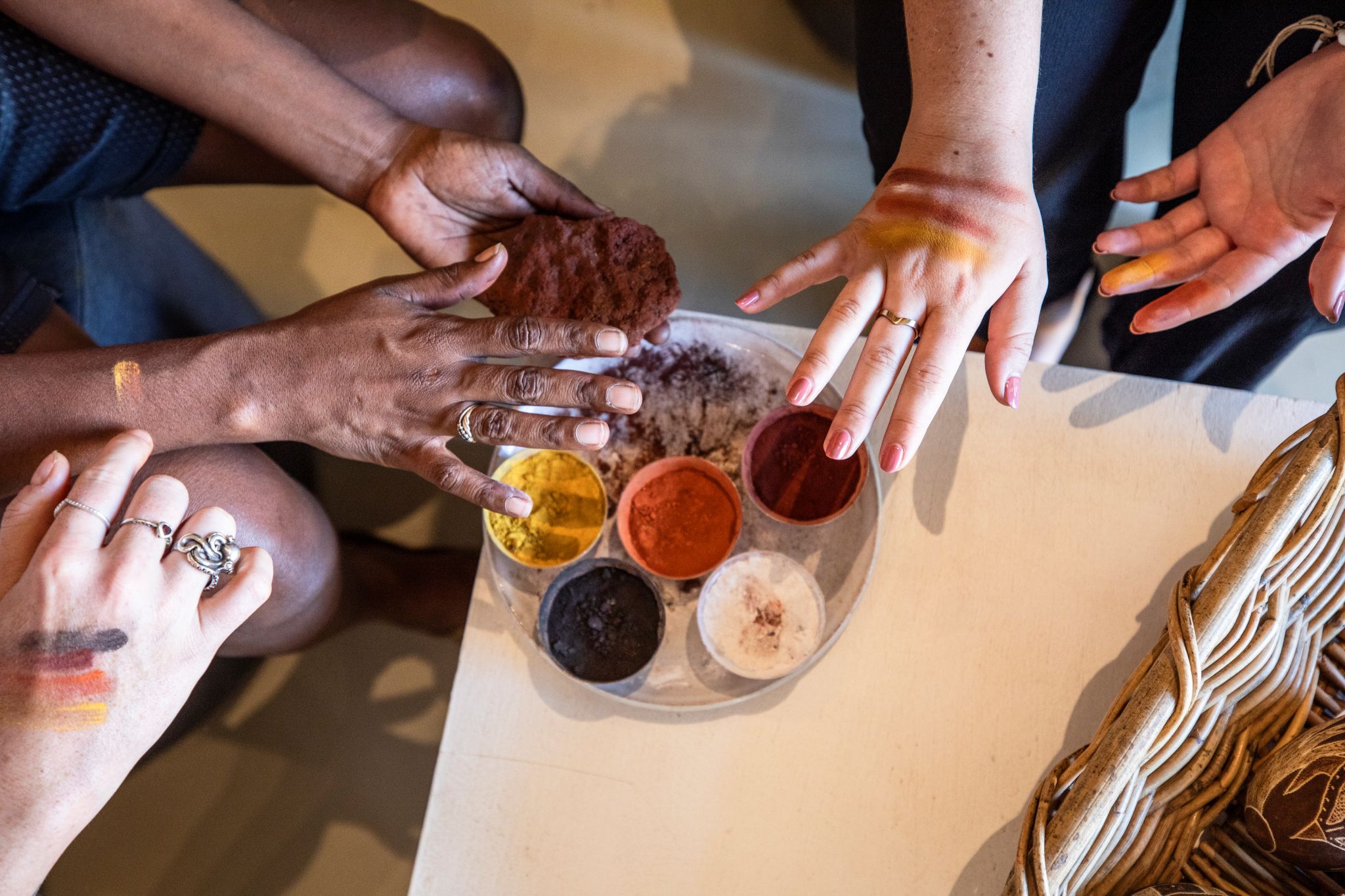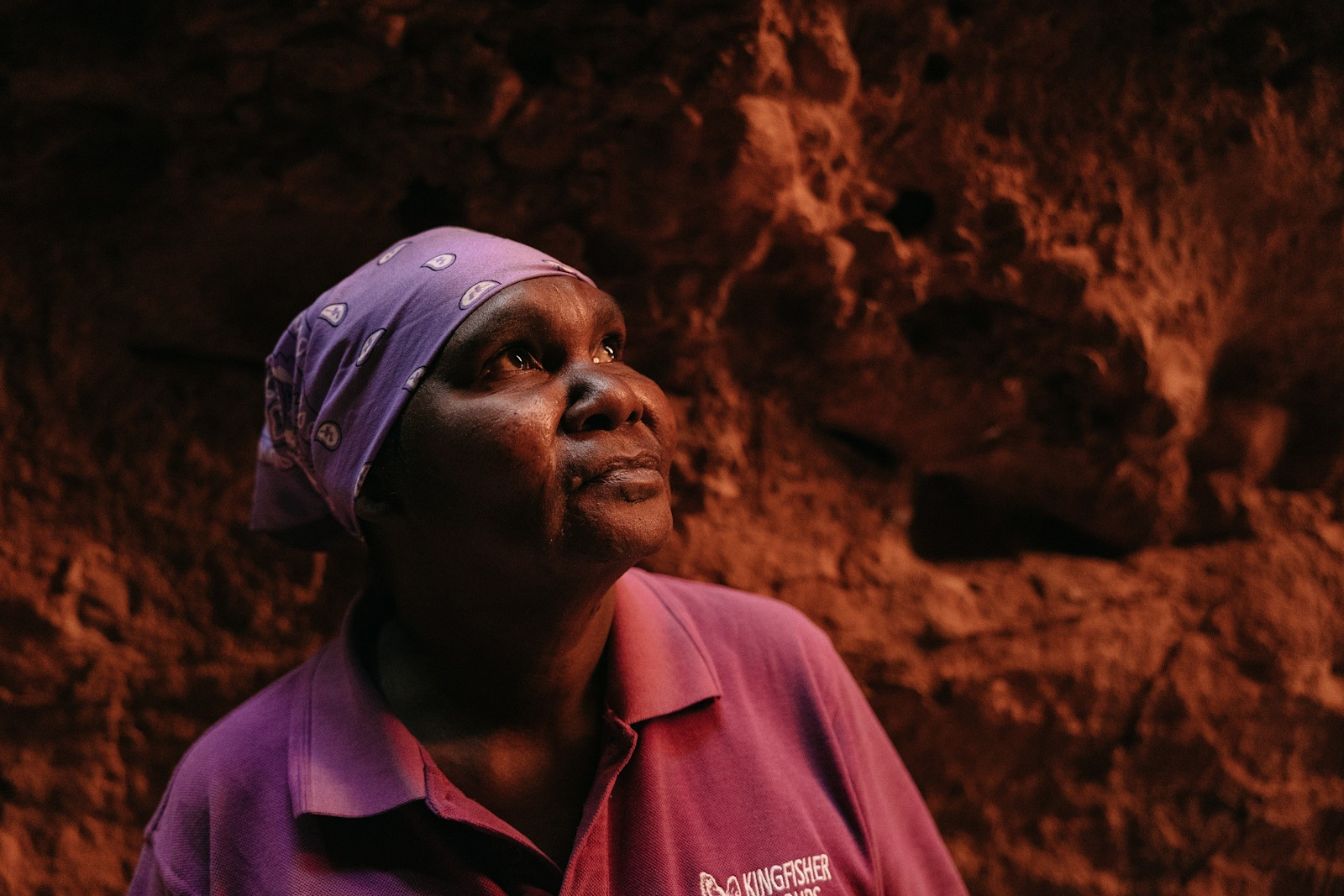Experience regenerative travel on an aboriginal tour
Described as leaving a place better than you found it – or the next step in sustainable travel – regenerative travel is a rising trend. Here’s how to experience it with an Aboriginal guide.

Taking in a spectacular view over the countryside with an Aboriginal guide from Waringarri Aboriginal Arts, Western Australia © Tourism Australia
So how can you get involved in regenerative travel Australia? If you’ve taken an Aboriginal tour, you’ve likely experienced regenerative travel without even knowing it.
Giving back to nature after benefiting from its bounty is a cornerstone of Aboriginal cultures. Near Cairns/Gimuy in Tropical North Queensland, Victor Bulmer, a Djunbunji Land and Sea Ranger and a guide with Mandingalbay Authentic Indigenous Tours, takes guests to an ancient midden on the company’s Hands on Country Eco Tour. This, he’ll tell you, is one of the world’s earliest forms of conservation – shells and bones discarded here indicated to visiting Aboriginal groups which recently-consumed produce should be avoided to maintain a healthy ecosystem. By taking a tour with Victor or one of his fellow rangers, visitors can help to support their work preserving sacred sites like middens – and the important lessons they continue to teach us all.

Cruising Trinity Inlet, Cairns, with Mandingalbay Ancient Indigenous Tours © Tourism Australia
The ancient aquaculture systems at southwestern Victoria’s Budj Bim Cultural Landscape also continue to teach us important lessons about conservation and engineering. The Gunditjmara-owned and -operated Tae Rak Aquaculture Centre stands on a unique UNESCO World Heritage site, listed solely for its Aboriginal cultural significance. This extraordinary region bears evidence of one of the world's oldest and most extensive aquaculture systems, dating back over 6,600 years. The Gunditjmara people ingeniously constructed an intricate network of channels, weirs and dams to capture and harvest kooyang (eels), showcasing their remarkable engineering prowess. From the Tae Rak Aquaculture Centre, visitors embark on cultural tours led by Gunditjmara guides, discovering ancient lava flows, fish traps, eel smoking trees and remnants of Aboriginal stone huts.

Couple taking in the view over World Heritage-listed Budj Bim, Victoria © Tourism Australia
Aboriginal tours also reveal that many traditional Aboriginal regenerative techniques continue to play important roles in safeguarding Australia’s delicate ecosystems today. On the immersive Yuin Retreat hosted by Ngaran Ngaran Culture Awareness on the New South Wales South Coast, you’ll learn how cultural burning developed by your Yuin guides’ ancestors is now being harnessed to prevent destructive fires on this picturesque stretch of coast.

Ngaran Ngaran Culture Awareness, South Coast, New South Wales © Tourism Australia
Regenerative tourism isn’t just about regenerating the natural environment, as you’ll discover at Waringarri Aboriginal Arts & Tours. Its art centre plays a part in preserving and regenerating the Miriwoong language, which has fewer than 20 fluent speakers remaining, by providing a place for Miriwoong artists to gather to work on their craft and share their language and culture.
All Aboriginal experiences, in fact, can be described as regenerative travel. At a time when positive-impact travel has never been more important, engaging in Aboriginal tourism offers myriad opportunities to pay it forward.

Aboriginal artists painting hands with ochre at Waringarri Aboriginal Arts, Western Australia © Tourism Australia












